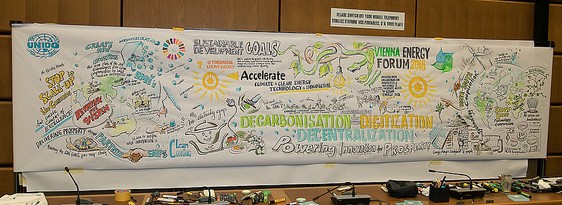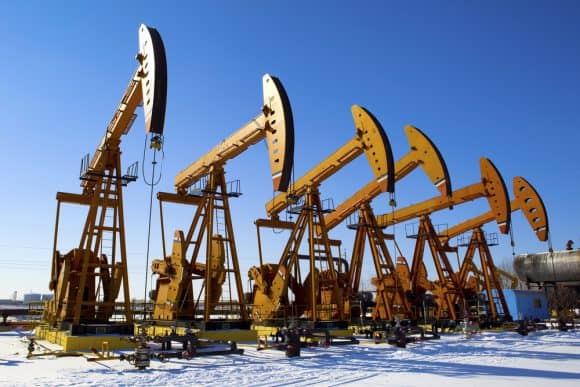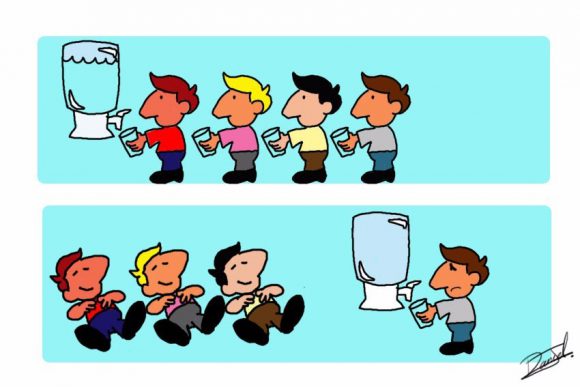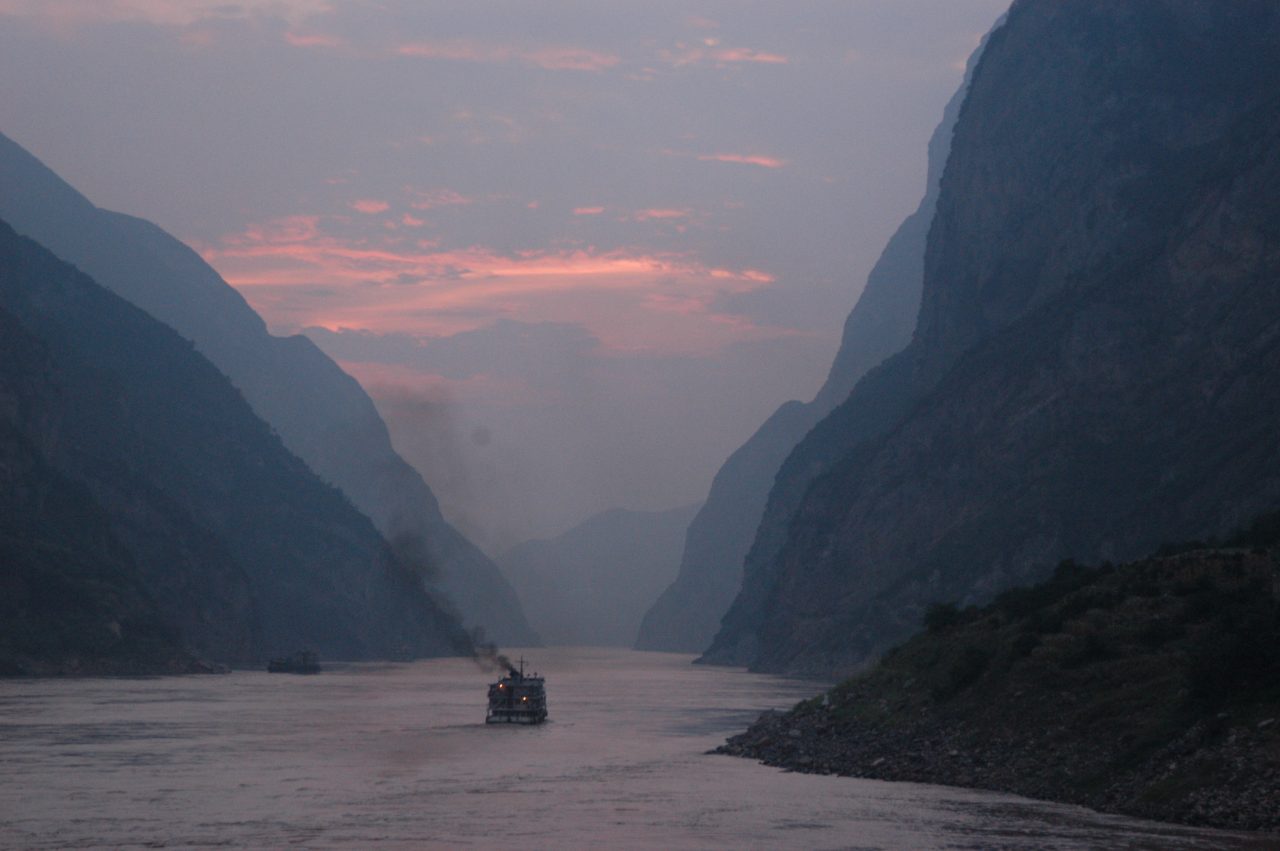May 28, 2018 | Air Pollution, Climate, Climate Change, Ecosystems, Energy & Climate, Women in Science
By Beatriz Mayor, Research Scholar at IIASA
On 14 and 15 May, Vienna hosted two important events within the frame of the world energy and climate change agendas: the Vienna Energy Forum and the R20 Austrian World Summit. Since I had the pleasure and privilege to attend both, I would like to share some insights and relevant messages I took home with me.

Beatriz Mayor at the Austrian World Summit © Beatriz Mayor
To begin with, ‘renewable energy’ was the buzzword of the moment. Renewable energy is not only the future, it is the present. Recently, 20-year solar PV contracts were signed for US$0.02/kWh. However, renewable energy is not only about mitigating the effects of climate change, but also about turning the planet into a world we (humans from all regions, regardless of the local conditions) want to live in. It is not only about producing energy, about reaching a number of KWh equivalent to the expected demand–renewables are about providing a service to communities, meeting their needs, and improving their ways of life. It does not consist only of taking a solar LED lamp to a remote rural house in India or Africa. It is about first understanding the problem and then seeking the right solution. Such a light will be of no use if a mother has to spend the whole day walking 10 km to find water at the closest spring or well, and come back by sunset to work on her loom, only to find that the lamp has run out of battery. Why? Because her son had to take it to school to light his way back home.
This is where the concept of ‘nexus’ entered the room, and I have to say that more than once it was brought up by IIASA Deputy Director General Nebojsa Nakicenovic. A nexus approach means adopting an integrated approach and understanding both the problems and the solutions, the cross and rebound effects, and the synergies; and it is on the latter that we should focus our efforts to maximize the effect with minimal effort. Looking at the nexus involves addressing the interdependencies between the water, energy, and food sectors, but also expanding the reach to other critical dimensions such as health, poverty, education, and gender. Overall, this means pursuing the Sustainable Development Goals (SDGs).

Vienna Energy Forum banner created by artists on the day © UNIDO / Flickr
Another key word that was repeatedly mentioned was finance. The question was how to raise and mobilize funds for the implementation of the required solutions and initiatives. The answer: blended funding and private funding mobilization. This means combining different funding sources, including crowd funding and citizen-social funding initiatives, and engaging the private sector by reducing the risk for investors. A wonderful example was presented by the city of Vienna, where a solar power plant was completely funded (and thus owned) by Viennese citizens through the purchase of shares.
This connects with the last message: the importance of a bottom-up approach and the critical role of those at the local level. Speakers and panelists gave several examples of successful initiatives in Mali, India, Vienna, and California. Most of the debates focused on how to search for solutions and facilitate access to funding and implementation in the Global South. However, two things became clear. Firstly, massive political and investment efforts are required in emerging countries to set up the infrastructural and social environment (including capacity building) to achieve the SDGs. Secondly, the effort and cost of dismantling a well-rooted technological and infrastructural system once put in place, such as fossil fuel-based power networks in the case of developed countries, are also huge. Hence, the importance of emerging economies going directly for sustainable solutions, which will pay off in the future in all possible aspects. HRH Princess Abze Djigma from Burkina Faso emphasized that this is already happening in Africa. Progress is being made at a critical rate, triggered by local initiatives that will displace the age of huge, donor-funded, top-down projects, to give way to bottom-up, collaborative co-funding and co-development.
Overall, if I had to pick just one message among the information overload I faced over these two days, it would be the statement by a young fellow in the audience from African Champions: “Africa is not underdeveloped, it is waiting and watching not to repeat the mistakes made by the rest of the world.” We should keep this message in mind.
Mar 7, 2018 | Energy & Climate
By Jessica Jewell, David McCollum, Johannes Emmerling, Christoph Bertram, David E.H.J. Gernaat, Volker Krey, Leonidas Paroussos, Loïc Berger, Kostas Fragkiadakis, Ilkka Keppo, Nawfal Saadi, Massimo Tavoni, Detlef van Vuuren, Vadim Vinichenko, Keywan Riahi
Our recent paper about our research on the effects of removing fossil fuel subsidies, published in Nature on February 8, 2018, generated a lot of comment and debate.
Here, we respond to three important themes raised in these comments. The first concerns the interpretation of our findings about the significance of subsidy removal for reducing CO2 emissions, the second concerns our approach to modeling and the data we used, and the third relates to policy options for more effective subsidy reform.

© Shutterstock / huyangshu
What are fossil fuel subsidies and why are they interesting for climate?
Fossil fuel subsidies are government interventions which decrease the price of fossil fuels below the market price. They can go to supporting the extraction of oil, gas, and coal (production subsidies) or making fuels cheaper for consumers (consumption subsidies) and amounted to over US$400 billion in 2015. There is a certain irony in that so many governments signed on to the Paris Agreement in 2015 yet in that same year many of those same governments spent so much money making fossil fuels cheaper.
How much would removing these subsidies help climate change mitigation efforts? How does it compare to what countries have already pledged to do for the climate under the Paris Agreement?
Comparing emission reductions from subsidy removal to key climate targets
Some commenters claim that it is already known that the effect of removing fossil fuel subsidies on emissions is limited. However, according to the authoritative Intergovernmental Panel on Climate Change Fifth Assessment Report (IPCC AR5), subsidy reform “can achieve significant emission reductions”. This view also is evident in the political sphere as: the Friends of Fossil Fuel Subsidy Reform, a group of countries called fossil fuel subsidy reform “the missing piece of the puzzle in the fight against climate change”.
Our findings are that fossil fuel subsidy removal would lead to a 1-4% reduction in CO2 emissions in the energy sector by 2030 if oil prices stay low, and 1-5% if oil prices rise again, compared to the rise in emissions if subsidies are maintained, the baseline. It means that subsidy reform is a modest contribution to the global reductions required to achieve 2°C in a least-cost pathway, 27-57% by 2030.
More importantly, in our paper we compare emission reductions from subsidy removal not to this ideal goal, but to the actual targets pledged in the context of the Paris Agreement. Globally, Paris pledges would reduce emissions against the baseline in the energy sector by 9-13% in 2030 (under a moderate growth baseline) which is a larger reduction than fossil fuel subsidy removal would deliver. Under both the Paris climate pledges and fossil fuel subsidy phase-out global emissions would continue to rise whereas to achieve the 2°C target they should peak and eventually decline.
Identifying the regions with greatest impact
This global assessment is only part of our study. In addition, we show how the impacts of subsidy removal are different by region. In the major oil and gas exporting regions (Middle East and North Africa, Russia and its neighboring countries, and Latin America), removing fossil fuel subsidies lowers emissions by the same amount or more than these countries’ Paris pledges. Government revenues in these regions largely come from energy exports, which are squeezed by today’s low oil prices. Lowering government spending by removing subsidies is a real political opportunity to reduce emissions in these regions.
In other developing and emerging economies (India, China, the rest of Asia and Sub-Saharan Africa), removing fossil fuel subsidies has less of an effect on emissions than these countries’ Paris pledges. In addition, the number of people who might be affected by subsidy removal in these regions is higher, simply because there are many more people living below the poverty line, for whom subsidies make the most difference. Taken together, these two findings frame one of our main results: that subsidy removal would be most useful for the climate precisely in the regions where it would affect fewer people living below the poverty line.
Data on subsidies
The second theme we would like to address relates to our data and modeling. Some commenters claimed that we underestimate both production subsidies and the effect of their removal.
According to data from the IEA and OECD only about 4% of subsidies are production subsidies. The International Institute for Sustainable Development (IISD) and Overseas Development Institute (ODI) publish an independent estimate based on their own definition and approach. Extrapolating to the global level, production subsidies would be about 14% in 2013 under their approach. We ran a sensitivity analysis using this higher production subsidies estimate. This did not change our findings (discussed in the Supplementary Information to our article).
Some commenters claimed that our study does not consider electricity production subsidies. This is also not true. We use the IEA data where power generation subsidies are captured in electricity subsidies. The SI discusses how each model integrates electricity subsidies.
There are other, fragmented estimates for electricity generation subsidies in individual countries, which generally take a different view of subsidies. For example, the recent report from IISD on Chinese subsidies to coal-fired power plants indicates that in 2014 and 2015, between 89% and 97% of these subsidies went to incentivize air pollution control equipment or closing inefficient plants. According to the same report, these subsidies also dropped by half from 2014 to 2015. Few governments would consider this as an environmentally-harmful subsidy, and removing such support will increase, not decrease emissions.
For our main analysis, we relied on IEA and OECD data for both production and consumption subsidies because these inventories are aligned with governments’ own estimates which are prepared as part of the G20 pledge to remove subsidies from 2009 reaffirmed in 2016. By using the same input data as governments and international organizations who are pledging or considering fossil fuel subsidy removal, we ensure the policy relevance of our results for these actors.
Estimating the effects of production subsidy removal
There were several comparisons of our results with those reported in a recent paper by Erickson et.al. in Nature Energy, which found that under the currently low oil prices, removing production subsidies in the US would make several oil fields unprofitable and eventually result in their closure. We find contrasting these two papers misleading as they ask very different research questions. Our study does not investigate how many oil fields in the US or elsewhere will become unprofitable after subsidy removal, but looks at the global effect of subsidy removal on emissions by taking into account trade in fossil fuels, the demand response and potential substitution of fuels and technologies. Erickson and his colleagues do not ask how much emissions will change as a result of closed oil fields. These are two very different questions.
Erickson and his colleagues compare the amount of carbon embedded in the oil reserves that may become unprofitable due to subsidy removal, to how much carbon the US would be allowed to emit under a stringent climate target. This creates an impression that they investigate the impact of removing oil production subsidies on US emissions. However, calculating the emission impact from removing oil production subsidies requires not only calculating the emissions embedded in foregone oil production, but also the possible emissions resulting from replacing this lost oil with other fuels, or changes in demand, for example if Americans choose to drive less if wells are closed, or if the US imports oil instead. We use these types of feedbacks in our models to calculate the emissions effects of subsidy removal (both consumption and production).
Redirecting subsidy funds
The third theme raised in the comments to our article was why we did not model redirecting subsidies to supporting renewable energy. While this is a very tempting question to ask from a climate perspective, and certainly one which we could do in our models, we did not consider it a realistic policy to be prioritized in our scenarios. In most countries fuel subsidies were introduced to support those on low incomes, although it is an inefficient way to do so. A state budget deficit and today’s low oil prices can often prompt successful subsidy reform. Indonesia for example recently expanded spending on infrastructure and programs to reduce poverty, while India introduced vouchers for cooking fuels. Iran, meanwhile introduced universal health coverage.
Fossil fuel subsidies do need reform
We would like to express our agreement with two comments, one from Ian Parry who wrote a commentary to our paper in Nature, and another from David Victor in his statement to Scientific American, that there are many reasons to reform fossil fuel subsidies other than emissions reductions. Our article does not cover these reasons and should not be interpreted as a comprehensive assessment of all aspects of subsidy removal.
We do however hope that our transparent and rigorous assessment of the effects of subsidy removal on CO2 emissions and energy use will support realistic and effective subsidy removal policies, and help in understanding the relative importance of a range of emission-reduction measures needed for achieving the ambitious long-term targets of the Paris Agreement.
As some commenters pointed out, we need all tools in the box to combat the enormous challenge of climate change. We fully agree. At the same time, we also believe in the need to understand how much each tool can do and where it can be most effective. This is exactly what our study answers.
Reference
Jewell J, McCollum, D Emmerling J, Bertram C, Gernaat DEHJ, Krey V, Paroussos L, Berger L, Fragkiadakis K, Keppo I, Saadi, N, Tavoni M, van Vuuren D, Vinichenko V, Riahi K (2018) Limited emission reductions from fuel subsidy removal except in energy exporting regions. Nature DOI: 10.1038/nature25467
Note: This article gives the views of the author, and not the position of the Nexus blog, nor of the International Institute for Applied Systems Analysis.
Nov 7, 2017 | Data and Methods, Food, Postdoc, Water
By Valeria Javalera Rincón, IIASA CONACYT Postdoctoral Fellow in the Ecosystems Services and Management and Advanced Systems Analysis programs.
What is more important: water, energy, or food?
If you work in the water, energy or agriculture sector we can guess what your answer might be! But if you are a policy or decision maker trying to balance all three, then you know that it is getting more and more difficult to meet the growing demand for water, energy, and food with the natural resources available. The need for this balance was confirmed by the 17 Sustainable Development Goals, agreed by 193 countries, and the Paris climate agreement. But how to achieve it? Intelligent cooperation is the key.
The thing is that water, energy, and food are all related in such a way that are reliant on each other for production or distribution. This is the so-called Water-Energy-Food nexus. In many cases, you need water to produce energy, you need energy to pump water, and you need water and energy to produce, distribute, and conserve food.
Many scientists have tried to relate or to link models for water, agriculture, land, and energy to study these synergic relationships. In general, so far, there are two ways that this has been solved: One is integrating models with “hard linkages” like this:

© Daniel Javalera
In the picture there are six models (let’s say water, land use, hydro energy, gas, coal, food production models) that are then integrated into just one. The resulting integrated model then preserves the relationships but is complex, and in order to make it work with our current computer power you often have to sacrifice details.
Another way is to link them is using so-called “soft linkages” where the output of one model is the input of the next one, like this:

© Daniel Javalera
In the picture, each person is a model and the input is the amount of water left. These models all refer to a common resource (the water) and are connected using “soft linkages.” These linkages are based on sequential interaction, so there is no feedback, and no real synergy.
The intelligent linker agent
But what if we could have the relations and synergies between the models? It would mean much more accurate findings and helpful policy advice. Well, now we can. The secret is to link through an intelligent linker agent.
I developed a methodology in which an intelligent linker agent is used as a “negotiator” between models that can communicate with each other. This negotiator applies a machine-learning algorithm that gives it the capability to learn from the interactions with the models. Through these interactions, the intelligent linker can advise on globally optimal actions.
The knowledge of the intelligent linker is based on past experience and also on hypothetical future actions that are evaluated in a training process. This methodology has been used to link drinking water networks, such as Barcelona’s drinking water network.
When I came to IIASA, I was asked to apply this approach to optimize trading between cities in the Shanxi region of China. I used a set of previously development models which aimed to distribute water and land available for each city in order to produce food (eight types of crops) and coal for energy. The intelligent linker agent optimizes trading between cities in order to satisfy demand at the lowest cost for each city.
The purpose of this exercise was to compare the solutions with those from “hard linkages” – like those in the first picture. We found that the intelligent linker is flexible enough to find the optimal solution to questions such as: How much of each of these products should each city export/import to satisfy global demand at a global lower economic and ecological cost? What actions are optimal when the total production is insufficient to meet the total demand? Under what conditions is it preferable to stop imports/exports when production is insufficient to supply the demand of each city?
The answers to these questions can be calculated by the interaction with the models of each city just by the interfacing with the intelligent linker agent, this means that no major changes in the models of each city were needed. We also found that, under the same conditions, the solutions using the intelligent linker agent were in agreement with those found when hard linking was used.
My next challenge is to build a prototype of a “distributed computer platform,” which will allow us to link models on different computers in different parts of the world—so that we in Austria could link to a model built by colleagues in Brazil, for example. I also want to link models of different sectors and regions of the globe, in order to prove that intelligent cooperation is the key to improving global welfare.
References
Xu X, Gao J, Cao G-Y, Ermoliev Y, Ermolieva T, Kryazhimskiy AV, & Rovenskaya E (2015). Modeling water-energy-food nexus for planning energy and agriculture developments: case study of coal mining industry in Shanxi province, China. IIASA Interim Report. IIASA, Laxenburg, Austria: IR-15-020
Javalera V, Morcego B, & Puig V, Negotiation and Learning in distributed MPC of Large Scale Systems, Proceedings of the 2010 American Control Conference, Baltimore, MD, 2010, pp. 3168-3173. doi: 10.1109/ACC.2010.5530986
Valeria J, Morcego B, & Puig V, Distributed MPC for Large Scale Systems using Agent-based Reinforcement Learning, In IFAC Proceedings Volumes, Volume 43, Issue 8, 2010, Pages 597-602, ISSN 1474-6670, ISBN 9783902661913, https://doi.org/10.3182/20100712-3-FR-2020.00097.
Morcego B, Javalera V, Puig V, & Vito R (2014). Distributed MPC Using Reinforcement Learning Based Negotiation: Application to Large Scale Systems. In: Maestre J., Negenborn R. (eds) Distributed Model Predictive Control Made Easy. Intelligent Systems, Control and automation: Science and Engineering, vol 69. Springer, Dordrecht
Javalera Rincón V, Distributed large scale systems: a multi-agent RL-MPC architecture, Universitat Politècnica de Catalunya. Institut d’Organització i Control de Sistemes Industrials,Doctoral thesis. 2016. http://upcommons.upc.edu/handle/2117/96332
Note: This article gives the views of the author and not the position of the Nexus blog, nor of the International Institute for Applied Systems Analysis.
Sep 21, 2017 | Eurasia
By Evgeny Vinokurov, Director of the Centre for Integration Studies at the Eurasian Development Bank, member of the IIASA-led project, Challenges and Opportunities of Economic Integration within a Wider European and Eurasian Space
An Italian nursery riddle goes: “Why does the heron stand on one leg? Because if it takes away the second leg, it will fall down!” An ornithologist will tell you that herons have incredibly strong legs. The EAEU, consisting of Armenia, Belarus, Kazakhstan, Kyrgyzstan, and Russia is not a heron – it does need to stand firmly on two legs. In this case, one leg is the European Union, and the other leg is the People’s Republic of China. An economist will tell you that the strength of “economic legs” underpinning the countries which make up the Eurasian Economic Union (EAEU) can be described, at best, as fair to middling: the heavy reliance on oil and gas is not particularly wholesome. That is why Russia and its EAEU partners need to establish close economic ties with both the EU and China.

© Galushko Sergey | Shutterstock
Both partners are critically important for the EAEU. The EU remains its largest trade partner: in 2016 it accounted for 50% of total exports from, and 41% of total imports to the Eurasian Union. EAEU member states are interested in expanding the inflow of European investment capital, transfer of EU technologies, and stable EU demand for energy. The EAEU, in turn, is the third largest EU trade partner (after the US and China); accordingly, the EU may be interested in liberalization of trade with the EAEU (establishment of a free trade agreement), reduction of non-tariff barriers in EAEU member states (with a view to increase EU exports), and stability of EAEU power supplies.
At the same time, the EAEU’s “turn to the East” is slowly gaining momentum: Asia-Pacific Economic Cooperation (APEC) countries,first and foremost, China and Association of Southeast Asian Nations (ASEAN) countries, are beginning to overtake the EU. By the end of 2016, the Eurasian Union had imported 1.5% more goods from APEC countries (42.3% of total imports, mostly from China, Korea, and ASEAN countries) than it did from EU countries. It is also important for EU investors to understand that they are exposed to an ever-increasing risk of losing EAEU markets due to the inflow of capital from the leading Asian economies.
These matters have been subjected to rigorous applied analysis in Challenges and Opportunities of Economic Integration within a Wider European and Eurasian Space, a project initiated by IIASA in 2014. It advanced an independent dialogue platform to facilitate interaction between representatives of supranational bodies, expert and business communities of the two unions. The project is designed to help its European and Eurasian participants find common ground with respect to a possible inter-union trade and economic agreement.
According to project publications , it is advisable to reach a comprehensive agreement covering a much broader range of partnership domains than that associated with a standard free trade area. According to the latest calculations by European and Russian experts, an EU-EAEU free trade agreement would produce a positive impact. However, experts from the Information and Forschung (IFO) institute in Munich point out that EAEU agriculture and automotive industry may suffer heavy losses. This demonstrates that it is necessary to work out a quite structurally complex solution offering asymmetric advantages to the two sides.
Relations with China display completely different patterns. Two following “tracks” are especially important.
The first relates to the ongoing negotiations on a non-preferential agreement on trade and economic cooperation between the EAEU and China, envisaging reciprocal minimization of barriers in customs regulations and the financial sector, and intensification of investment cooperation. Talks have already been underway for one year, and are expected to continue for another year or two.
The second track deals with realization of the One Belt One Road initiative. It involves implementation of large-scale joint infrastructure projects, primarily in transportation. EAEU’s participation in the One Belt One Road initiative is very promising for its member states, especially for Russia and Kazakhstan, which need to remove infrastructural limitations inhibiting railroad carriage of containerized cargoes. The EAEU continues to face the issue of insufficient investment capital allocation to container logistical hubs. Kazakhstan will also need to eliminate bottlenecks in its transportation and logistics infrastructure, primarily by building modern container terminals. These are but several of the numerous problems facing the EAEU.
We are looking at One Belt One Road in the broad Greater Eurasia context. Higher efficiency of Greater Eurasian land transportation corridors could enhance trade and generate numerous industrial opportunities. This is particularly relevant for landlocked countries and regions (all Central Asian countries, Russian Urals and Western Siberia).
Russia and its EAEU partners need to establish close economic cooperation ties with both the European Union and China. The EAEU will have to learn to balance between those two poles, making ample use of economic vistas presented by the tripartite cooperation setup, and “capitalize on contradictions.” If the EAEU manages to reach this overarching goal, its foreign economic policy would be successful.
This article gives the views of the author, and not the position of the Nexus blog, nor of the International Institute for Applied Systems Analysis.
Apr 24, 2017 | Sustainable Development
By Owen Gaffney, Stockholm Resilience Center (excerpted from a post on Rethink.earth)
What will the world be like in 2050?
Of course, it is difficult to make predictions, especially about the future, as the Danish proverb goes.
Part of the difficulty is that we – individuals and the institutions that allow us to act collectively and in the long term – routinely assume the future looks very much like the past. Just as routinely, though, this assumption is flipped on its head. Think of the global financial crisis, the Arab Spring, Brexit, or the recent US election.
But what if we already know what we want the world to look like in 2050. How do we get there?

Dusk on Chang Jiang (Yangtze) Credit: Andrew Hitchcock | Flickr, CC BY 2.0,
I was reminded of the Danish proverb as I arrived at the International Institute for Applied Systems Analysis (IIASA) outside Vienna earlier this month for a three-day meeting of The World in 2050 (TWI2050) initiative. This was the third such scientific meeting hosted here at the home of some of the leading economic, demographic and energy modellers.
TWI2050 is arguably the most ambitious research being undertaken in the world today. At its heart is an ambition to map out the pathways for a sustainable planet. As with the previous meetings, it attracted about 130 complex-systems thinkers and computer-modelling experts.
Unlike other international modelling initiatives, TWI2050 was not created to explore a range of possible utopian to dystopian scenarios focusing on energy prices or climate change. The baseline assumption is a single scenario: successful completion of the Sustainable Development Goals (SDGs), agreed by all nations in 2015, and arriving in 2050 with a global economy operating within planetary boundaries – the limits of natural systems that keep Earth in a relatively stable state, relating to climate, biodiversity, deforestation, and fertilizer use, among others.
#winwin
The 17 SDGs and their 169 targets are extremely ambitious. Buried in the detail are many trade-offs but also potential win-wins. Meeting the climate goal means reducing greenhouse-gas emissions to zero, and this could affect the energy, biodiversity, or consumption goals either positively or negatively. The goals and their inherent trade-offs are already catalyzing research and the results show how challenging this will be.
This month, scientists publishing in the journal Nature explored Australia’s land-use trade-offs to reach the goals. The team, who were not at the TWI2050 meeting, used a massive computer simulation called Land Use and Trade Offs (LUTO) to see how factors such as climate policies or crop prices could shape Australia’s landscape by 2050. Exploring 648 scenarios, researchers Brett Bryan and Lei Gao found just 1% of scenarios achieved five goals simultaneously. However, some goals seemed to go better together than others. Achieving targets related to food, water, and biofuel production was possible in 6.5% of scenarios, for example. The authors, whose work contributes to Future Earth’s Global Land Programme, conclude that national policymakers need more of this type of analysis to elucidate trade-offs and avoid conflicting policies. Moreover, they argued for more scientific coordination internationally for a global perspective on implementing the SDGs.
Other research groups have also begun exploring the world in 2050. Recently Karl Heinz Erb from the Institute of Social Ecology, Vienna, who attended the TWI2050 workshop, and colleagues explored 500 scenarios to assess options for feeding 9 billion people in 2050 without further deforestation .
Their work, which also supports the Global Land Programme, concluded that it was possible, but would likely mean low meat, vegetarian, or vegan diets globally. Meanwhile, Marco Springmann from the Oxford Martin Programme on the Future of Food, also attending, and colleagues showed that by 2050 a global vegetarian diet would reduce diet-related global mortality by 6-10% and food-related greenhouse gas emissions by 29-70% – contributing to several goals. This type of research is essential to understand potential win-wins but these examples do not provide the pathways to arrive at these scenarios.
So, are computer models powerful enough to capture essential elements of incremental and disruptive change across complex issues relating to poverty, equality, education, technology, policy, energy, food, water, and climate? Read more on the Rethink.earth website
This article is excerpted from an article on the Rethink.earth website. It gives the views of the author, and not the position of the Nexus blog, nor of the International Institute for Applied Systems Analysis.
*The Stockholm Resilience Centre is one of the founding partners of The World in 2050 alongside the Sustainable Development Solutions Network and IIASA. Contributing organisations include the European Commission, Future Earth, Netherlands Environmental Assessment Agency, Potsdam Institute for Climate Impact Research, Future Earth. Check out the website for details.
References









You must be logged in to post a comment.